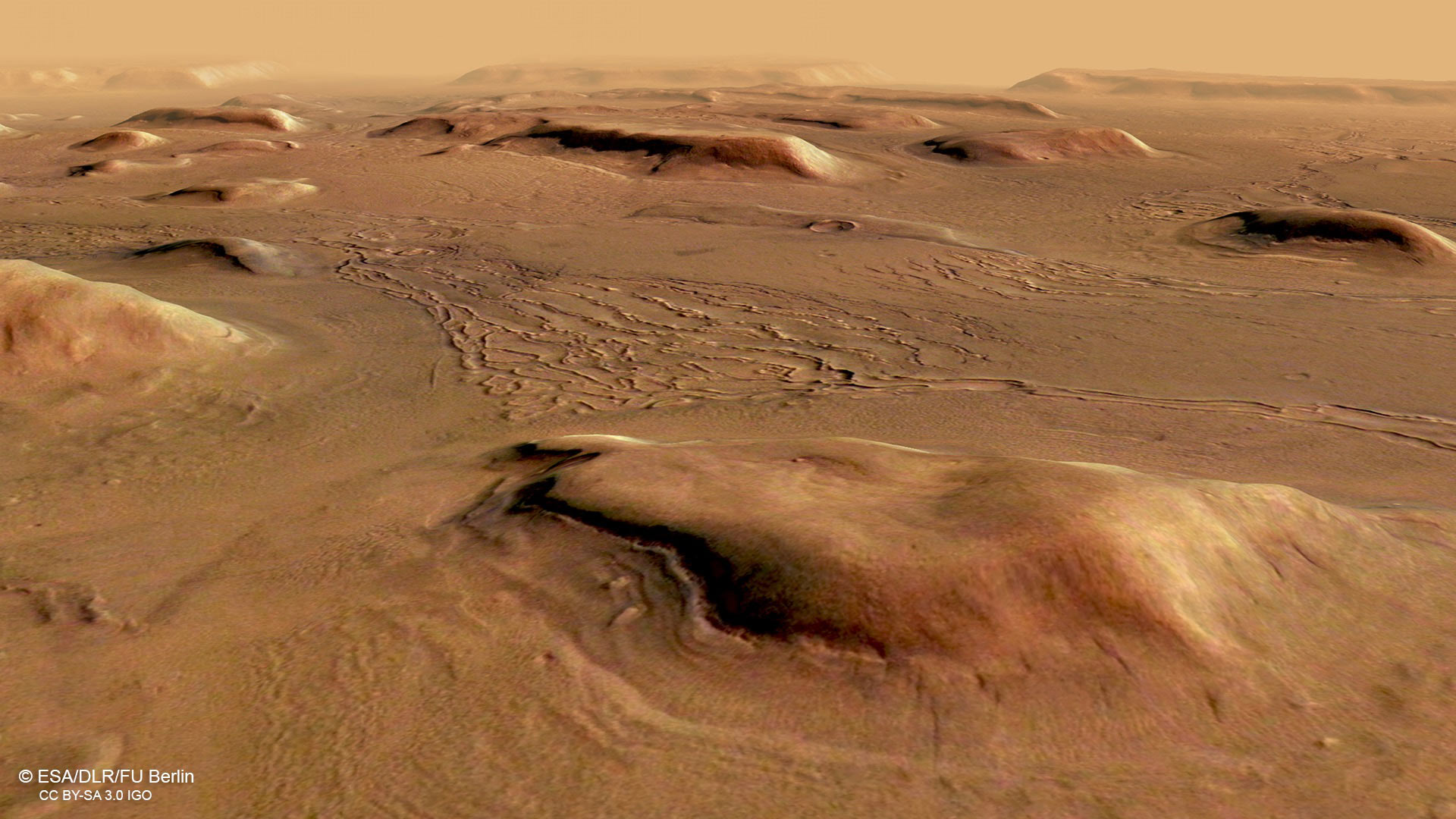
Mars is a mysterious place in many ways — not least because its two hemispheres are drastically different. The northern hemisphere of the planet has low plains, with few impact craters, while the southern hemisphere is mountainous and pockmarked by craters. And scientists still aren’t sure why the two halves of the planet are so different.
In between the two hemispheres is a transitional region with unusual geological features called fretted terrain. Areas of fretted terrain contain a strange mix of canyons, cliffs, mounds, ridges, and more, and the European Space Agency’s Mars Express spacecraft has been investigating one such area called Deuteronilus Mensae for clues about how these features developed. The Mars Express craft has been in orbit around Mars since 2003, collecting data about the surface with instruments including its High Resolution Stereo Camera (HRSC).
The image above shows a part of the Deuteronilus Mensae region, and scientists believe that it looks the way that it does due to ancient flowing ice. Millions of years ago, glaciers moved through the area, eroding rock and carving out channels that can still be seen today. The plains and plateaus that would have been there before were gradually flattened by the progress of the glaciers, leaving behind only mounds of rock.
The idea that glaciers were present in Deuteronilus Mensae is supported by data from NASA’s Mars Reconnaissance Orbiter (MRO), which also orbits around Mars and captures high-definition images of the surface. The MRO found that up to 90% of the glacial features of the region could have contained water ice. This suggests that there was not just the odd pocket of ice or glacial activity in the area — rather, the whole region could have been covered by an ice sheet. As Mars slowly warmed and lost its atmosphere, the ice sheet melted away to reveal the rock formations beneath.
Further studies have shown that it’s not just this region that has evidence of glacial activity. There could have been glaciers both above and below the equator, so there are many more areas of Mars which may have been under ice at some point in the past.



